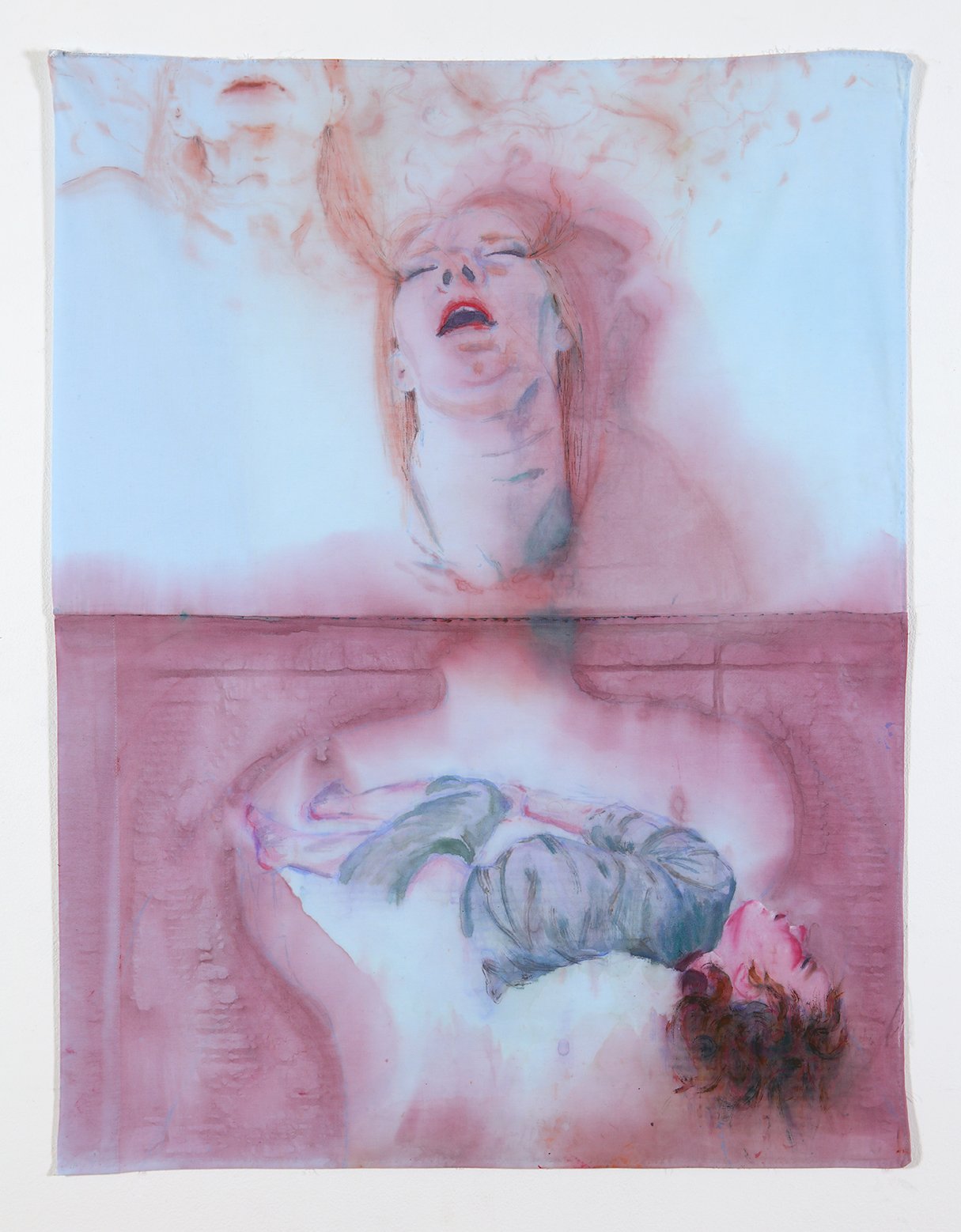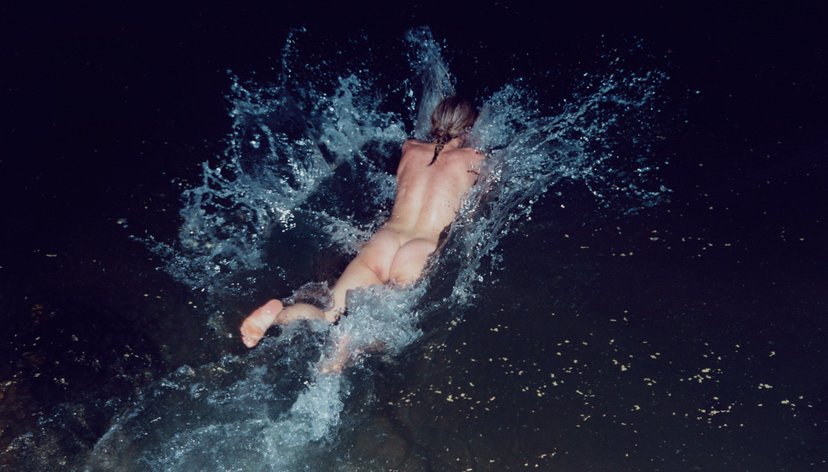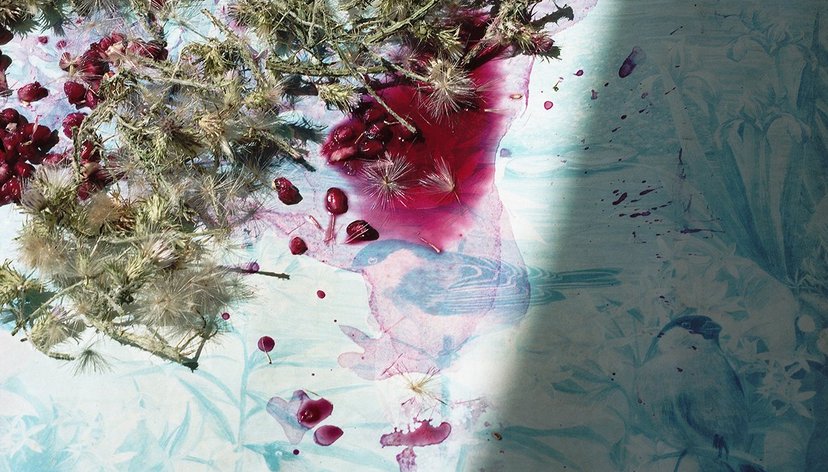
Key details
Date
- 15 November 2022
Author
- Lisa Pierre
Read time
- 6 minutes
Mindy Lee (MA Painting, 2004) is a practising artist with an established career. She has exhibited both nationally and internationally in spaces including the Danielle Arnaud Gallery, London; the Jerwood Project Space, London; Pump House Gallery, London; GaleriaOFF Piotrwska, Łódź, Poland and the Sichuan Academy of Fine Arts Museum, China.
Recent publications include interviews for Women in the Arts and Assemblage Magazine, Ghost Changing Room Catalogue by Matt Price, Mindy Lee & J.A.L-B by Joanne Morra for the Journal of Contemporary Painting and On Innards, a collaborative artist’s book/multidisciplinary project, published by bookRoom Press.
For more than 10 years Mindy has taught both fine art and curation as a visiting lecturer at universities throughout the country. Current exhibitions include: This Year’s Model, (part II) Studio 1.1 Gallery, London and Breaking Bread, Broadway Gallery, Letchworth. 2023 will see a solo exhibition Stories from Within at Portsmouth Art Space. She is the Head of Art and Curator at The Blyth – Centre for Music and Visual Arts - Imperial College London.
“Trust yourself and your gut. Do not pretend to be an artist that you are not, to try to fit in. If your work doesn’t fit into an existing contemporary art context, create that framework yourself. Take ownership of your context and share it as honestly and clearly as possible.”
Artist
During your time at the College you mainly worked as a black and white abstract painter. You moved on to working in colour after you graduated. What do you think led to this creative shift?
After I had some time to unwind and digest my RCA experience, I was ready to mix things up again. I began to play around and retest my own rules for making, without needing to contextualise myself straight away. This was very liberating! I felt more confident and cheekier with my practice… and so naughty cracking out the colour again.
I realised if I could use colour differently, it could be reintroduced. I explored the colour’s character over its aesthetic. So, I used colour as toxic, tart, sweltering, subdued, fragile and decomposing etc. I combined these active colours with gestures such as splintering, oozing and flitting etc. This changed my approach to colour and I have been using it ever since.
Your work often involves a mixture of mediums and textures. Did you originally start out working like this?
No. Originally my paintings were very flat and all stretched on canvas as a given starting point. I was content to create a painting, within its frame as a window into another world, creating an illusion through shape, scale and colour.
The work incorporated more mediums and textures after I had a sort of Matrix moment, where I became overly aware of the painting’s frame itself. I couldn’t and still can’t unsee it. The stretcher, the surface, sides of a painting and the visceral materiality of paint are all active and physically present. They create a pliable threshold to making a painting that moves between illusion and physical reality and this was something I wanted to push. I still think about these ideas when making.
A lot of your practice is painting but some of it is sculptural. Do you have a preference? And is the creative process the same for you?
I feel all my work is painting (and drawing). A more accurate phrase would be Extended Painting. Even the more sculptural and installation works I see as ‘horizontal paintings’ that sometimes break free of the confines of the frame. The layered and stitched works on clothes are double sided collaged paintings. The creative process is the same, so there is no preference for one way of working.

You said becoming a mum changed your practice. How so?
I became braver and more direct with my practice. Both in the process and subject. I allowed the autobiographical narratives that have always influenced my work to surface and become more explicit. My work has also become more honed-in and I’m less prone to fiddle around and overwork things. It feels more honest and vulnerable, which is good. I’ve also become more resourceful and less compartmentalised with all the different roles I have in life. I think these feeds into the practice as well.
Do you feel you focused a lot on the autobiographical elements to create memories, a modern photo album of sorts?
Oh, that’s an interesting way to look at it! The work questions and re-explores memories and experiences rather than creating them. They are incomplete glimpses into something that is passing and constantly shifting. Memories also become merged with other ideas circulating in my head such as fairy tales, folk stories, mythology and art history. One painting was inspired by my son braving a climbing frame, which became more of a transcription of Casper David Friedrich's The Wanderer.
But yes, I feel they do work kind of like a photo album. They remind me of what I was experiencing and remembering physically, psychologically and emotionally at the time.
As a lecturer what advice do you give to your students?
There are two parts to your practice, making the work and self-critical awareness. These cannot happen simultaneously. Whilst you are in the middle of making something, enjoy it, go with the flow, take risks and be playful.
When you have downed your tools, honestly reflect over what you have made. Don’t get too caught up in what work looks like, the right and wrongness of something, but to step back and think about what the work is doing and how effective that is.
Trust yourself and your gut. Do not pretend to be an artist that you are not, to try to fit in. If your work doesn’t fit into an existing contemporary art context, create that framework yourself. Take ownership of your context and share it as honestly and clearly as possible.
What does your role at the Blyth gallery involve?
The role has grown and evolved over the years. My work at the Blyth Centre for Music and Visual arts is split between running the gallery and art education. I am lucky to have been able to create and shape the programme. I run the gallery as an artist-led project space, which explores a variety of ambitious proposals both from within Imperial College and the art world. The internal exhibitions showcase work from Imperial College students and staff, the Blyth Art Fellows, and artists in residence at Imperial. External exhibitions explore work from RCA students, national and international artists and I also work with other curators and galleries. A lot of the 200 professional artists I have worked with so far are RCA alumni or current RCA tutors, which has happened organically over the years.
I either curate the exhibitions, co-curate, or invite a curator in and I will shadow curate, offering help and advice as the project evolves. I work on all aspects of the show, this can be creating and developing ideas, selecting artists and artworks, supporting artists through the projects and refining themes of the exhibition. I also work on the press, website and social media. I physically curate and light the work. Each project is different and needs bespoke support.
So basically, I work on most aspects of the show, with some logistical support from the Blyth Centre Administrator. I am currently celebrating my 200th exhibition at the Blyth Gallery, which is amazing and just bonkers that I have hosted and helped create that many shows since I graduated.

Your art practice doesn’t neatly fit into an existing Fine Art context. Does this allow you more creative freedom?
I am not one for neatness! There is more creative freedom if you keep questioning your own parameters for making. I try to think what the work needs, rather than how I would approach it from a given standpoint/ discipline. It is very tempting to stay working within an established ground, but this might not be an effective approach to communicating new ideas.
As a curator, what messages do you want to communicate to the viewer?
As a curator I want to communicate the artist’s message(s) clearly whilst combining their different ideas together in new ways.
Of course, I am naturally drawn to themes that I am or have been interested in as a part of my practice, e.g. horror and seduction, body and bodily, the fleeting, autobiography etc. But I also want to work on projects outside my comfort zone. I like working on projects that I don’t know already, something I’ve not seen that fascinates me, things that I can’t get a handle on. Something like an itch I need to scratch.
For me curation is a backstage rather than centre stage role. To start I have no clear message in mind. I use it as a research tool to explore different approaches to overlapping ideas. Sometimes these ideas fight with each other. Curation allows me to find a new place for each artist’s work to resonate clearly and spark together, rather than just looking for artists who will reaffirm or fit into the idea I initially had for an exhibition. I hope the end message isn’t too neatly tied up or overly resolved either, to allow the viewer an active role in making sense of the exhibition.
Tell us about your Exhibition next year?
I have a solo show coming up at Portsmouth Art Space in 2023 which I am currently working on. This new body of work re-explores my internal and external narratives ranging from the everyday to the more fantastical and mythological. My mother died at the start of the pandemic whilst the world emptied out - or retreated in. Now the tides turned and the otherness of the world overlaps and overwrites a quieter internal place to dwell with family ghosts.
I’ve titled the exhibition Stories from within as the paintings are tales from my heart that explore the fleeting and the perpetual, motherhood, family, love, loss, hauntings, longing, rituals, journeys and identity. This series of paintings are made on silk which has a ghost-like transparent quality, this echoes the transient scenarios loosely described on its surface. I’m really excited to share this body of work and find new connections between the paintings.



